Catch-as-Catch-Can (E. Lancashire, England)
This article is dedicated to my dear friend The Lancashire Lad- Mr. Ron Harrison of Manchester who is known to many British wrestling fans as wrestling researcher Ron Historyo.- Ron inspired me, believed in me, encouraged, supported and helped me in my studies of the history of Lancashire catch wrestling. It was him Ron Historyo- who suggested me writing The Story of Catch- after I shared with him the results of my studies and my ideas regarding the birth and evolution of Lancashire wrestling.
Geography
Lancashire wrestling (Catch-as-catch-can) was a folk amateur and professional freestyle wrestling culturally unique to the residents of East Lancashire, England. In the early 1850s in England outside East Lancashire this style of wrestling was known as the Manchester or Lancashire wrossle.
Historically, it was practiced on the territory which now includes Greater Manchester, as well as Blackburn, Burnley, Pendle, Rossendale and etc. Traditionally, those areas were known as Salford (South) and Blackburn (North) Hundreds of Lancashire County. This wrestling style was also popular among the residents of the places bordering with those areas namely Stockport, Stalybridge, Dukinfield, Hyde of Cheshire, Glossop, Marple Bridge, Woodhead of Derbyshire, and Saddleworth, Huddersfield, Halifax, Bradford, Batley, Dewsbury of West Riding, Yorkshire. The major Lancashire Catch-as-Catch-Can centers/towns listed from west to east were Wigan, Bolton, Bury, Middleton, Rochdale, Oldham, Ashton-under-Lyne.
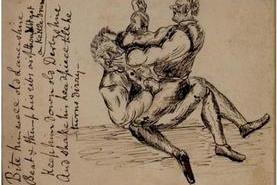
Folklore & Traditions
Traditionally, Lancashire folk wrestling amateur competitions (wrestling for love) were held during the local folk and religious festivals, such as Wakes week (Rushbearings), May Day, Easter, Whit Monday, Shrove Tuesday, even weekly markets on Sundays and etc.Since time immemorial the challenge matches were usually played out of curiosity who is the better man- or for a quarter or a half gallon of beer in the muddy enclosure at the back-yards of local pubs or in the nearby field on the green turf. The earliest known semi-amateur (pros were allowed to participate) single-elimination tourneys (such as the 1840s annual tournament at Old Cock Inn, Middleton, Lancs) were wrestled for the trophy pig- or a silver watch.
Professionalism
Professionalism in Lancashire catch wrestling was introduced in the 1820s and since then this style of wrestling was often referred to as a Catch-as-catch-can after the Lancashire fashion. The majority of professionals were recruited from the local colliers, and the most skilled of them were called the black diamonds.- The wrestling matches between the champions of Lancashire towns of Bolton and Oldham were the earliest known Lancashire Catch Wrestling Derby. The first major Lancashire catch pro wrestling title was the Nudger Sports Championships at Rochdale, Lancs in the 1840s. It was open to all Lancashire men catch weight single-elimination tournament. The first written rule set of Lancashire catch wrestling was issued in 1856 by the proprietor of Snipe Inn Grounds (Audenshaw, Lancs) Mr. Nelson Warren, aka the Snipe Inn Rules. During the early stage of the Era of Professionalism the main center of catch wrestling was established in Ashton-under-Lyne, Lancs the town which produced the greatest number of champions in the 1860s AKA "the Golden Era of Catch Wrestling." During that time the first official titles in the form of challenge trophies- were introduced in catch wrestling. The most prestigious among them were 9st championships: the Copenhagen Grounds Silver Belt (Newton Heath, Manchester) and the Snipe Inn Grounds Gold Cup.
In the late 19th century the epicenter of catch pro wrestling moved to Wigan, Lancs. This town which gave birth to so many generations of top-notch catch wrestlers maintained its superiority in the 20th century as well and is known among the fans and practitioners of catch wrestling as the Mecca of Catch-as-catch-can.-
In the 1870s-80s the Lancashire Wrestling Association (LWA), which was established in 1875/76, was running the annual championship tourneys for professionals at the Grand Circus on Peter-street, Manchester. The founders of that organization were former owners of the famous sporting venues (grounds) of the city of Manchester and the surrounding areas. The LWA competitions were governed by the Manchester's Sporting Chronicle- Rules (evolved version of the original Snipe Inn Rules) which soon became standard catch-as-catch-can rules in East Lancashire and remained as such for decades. During that time the following official weight classes were introduced in Lancashire catch wrestling: 116lb, 126lb, 138lb and 154lb. Just like in the 1860s the most prestigious and competitive- weight division was the 9 stone championship. [Editor's note: there are 14lbs to a stone].
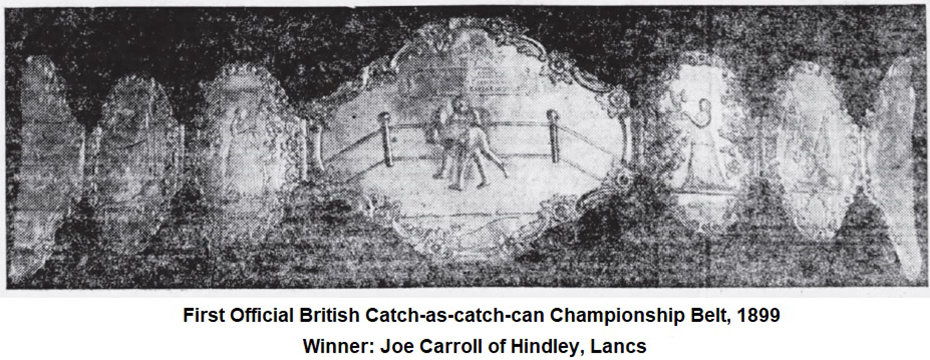
In 1899 Lancashire catch wrestling finally conquered London, the capital of Empire. The open to all British men tourney was held at National Athletic Grounds, in Kensal Rise, London during the Easter holidays. The championships were promoted in two weight divisions: middleweight (12st limit) and lightweight (10st 4lb limit). Joe Carroll of Hindley, Lancs won the middleweight tourney and was proclaimed the first official British champion wrestler and became the holder of the magnificent gold and silver belt emblematic of that title. The lightweight championship was undecided.
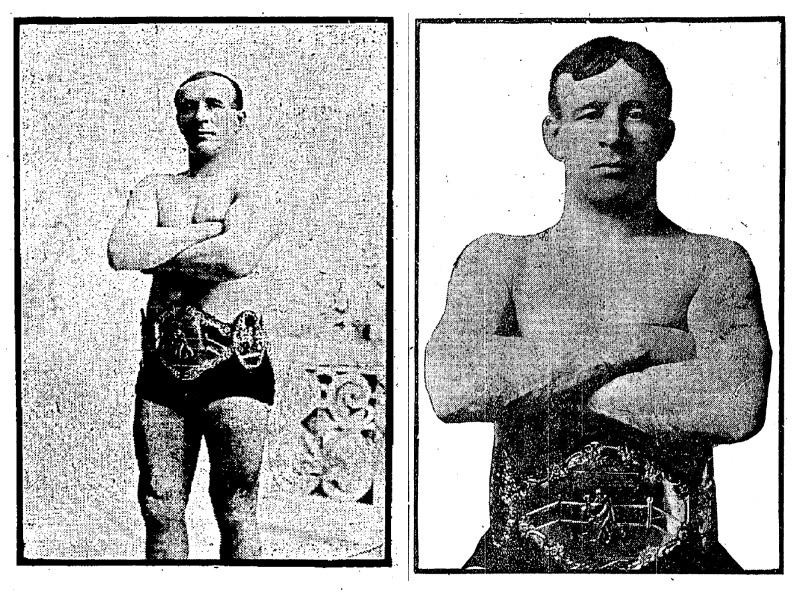
In 1899 the champion wrestler of international fame named Tom Cannon (native of Tyldsley, Lancs) organized the first world's catch-as-catch-can championship wrestling promotion in England. The 1899 Joe Carroll's British Championship Belt was symbolic of the world title in that promotion. Among Cannon's world champions were American wrestler of Cornish descent Jack Carkeek (winner of the 1899 tourney) and Jim Parr of Wigan (winner of the 1902 tourney).
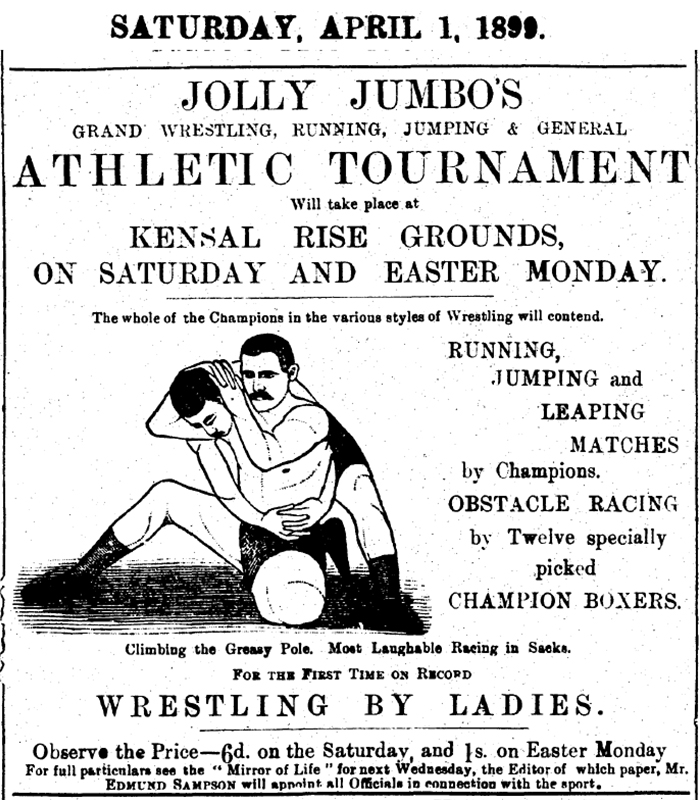
List of the most famous 19th century pro Lancashire catch wrestlers by decade:
- 1820s/30s John Rowland of Bolton, William Buckley (Trout) and John Holt both of Oldham.
- 1840s/50s Adam Ridings (Dockum) of Bury, James Matley (Barrel) of Ashton, James Buckley of Middleton, George Swithenbank of Saddleworth, undefeated heavyweight champion William Swann of Ashton, as well as champion heavyweight boxer of England Sam Hurst of Stalybridge.
- 1860s the best pound for pound catch wrestler of 19th century Teddy Lowe of Whitworth, John Meadowcroft and David Bentley both of Bury, William Schora, Frank Robinson, John Massey, Joseph Newton (Teapot) all from the Ashton areas.
- 1870s Edwin Bibby of Ashton (who at first was the undefeated 9st champion and then switched to an open weight class competitions), John Lees, John Butterworth (Dockum) both of Oldham, undefeated heavyweight champion William Snape (Dipper) of Bolton, John Tonge (Eckersley), Joe Acton, William Moullineux (Sellars), Miles Sweeney all of Wigan.
- 1880s/90s Abraham Travis (Ab-o-Wags) of Oldham, James Faulkner, Isaac Smith, William Winstanley (Soap), Tom Connor, Charles Green, Tom Jones (Burgy Ben), Joe Carroll, James Morris (Stockley) all from the Wigan areas, Tom Clayton (Bulldog) of Bolton, James Mellor, Jack Smith both of Stalybridge, Sam Moores of Salford.
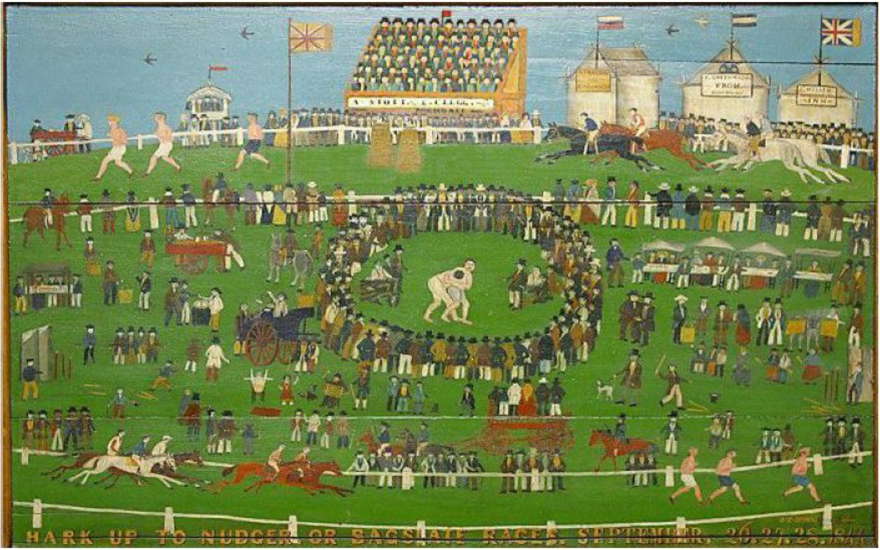
The transformation of professional Lancashire catch wrestling into a present-day sport of pro wrestling (aka Music Halls style) occurred during the so-called British Wrestling Boom Era in the 1904-1910. National Amateur Wrestling Association of Great Britain (NAWA) already existed (est. in 1904) but their wrestling, though also being called catch-as-catch-can wasn't after the "old Lancashire fashion", it was a style which originated in London. That wrestling style was first introduced in England by the German Gymnastic Society (Turners) in the 1860s and soon became popular among British amateur wrestlers.
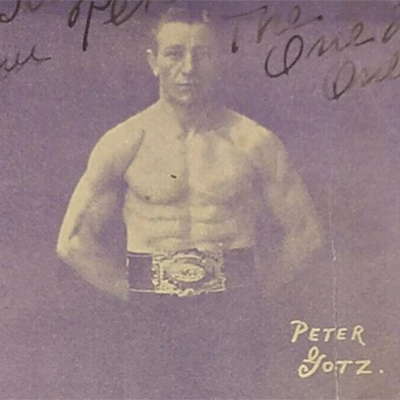
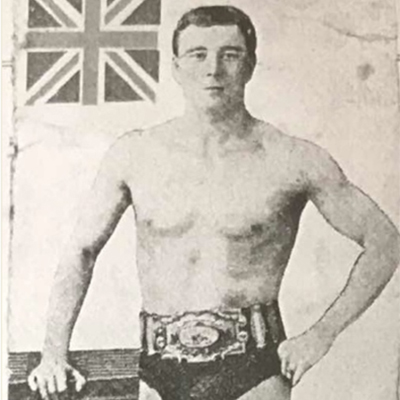
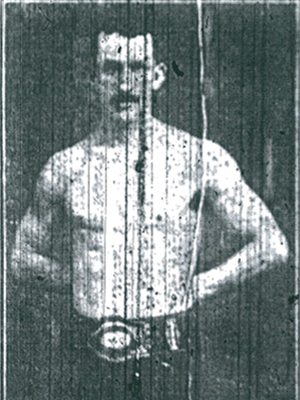
Since 1904 NAWA Catch-as-catch-can Rules (pinfalls or a referee decision based on points in case the back fall wasn't achieved) were generally accepted by both amateurs and professionals of Great Britain. During that era all catch wrestling contests (for both amateurs and professionals) in East Lancashire were governed by the updated version of the Manchester's "Sporting Chronicle" Rules which were in harmony with the current NAWA Rules. ?Among the most famous pro Lancashire catch wrestlers of the British Wrestling Boom Era were: Harry Mort of Oldham, Tom Rose of Bolton, Willie Collins, Jack Carroll (nephew of Joe Carroll), Jack Brown, William Charnock, Jim Foster and Bob Berry all from the Wigan areas, Job Shambley of Westhoughton, Peter Bannon of Burnley, Jack Winrow of Heywood.

The international professional championships in the catch-as-catch-can wrestling style in the 1900s were held under the auspices of the National Sporting Club of London (NSC) and according to the London catch wrestling rules. Their first official title was the so-called 1902 Coronation Tournament- (open weight class) which was won by a Swiss athlete Armand Cherpillod. In 1908-1910 NSC held annual international/world championship tourneys (heavyweight, middleweight, lightweight divisions) at Alhambra Theatre in London. In 1909 and 1910 the winners of those competitions received the Lonsdale Championship Belts.
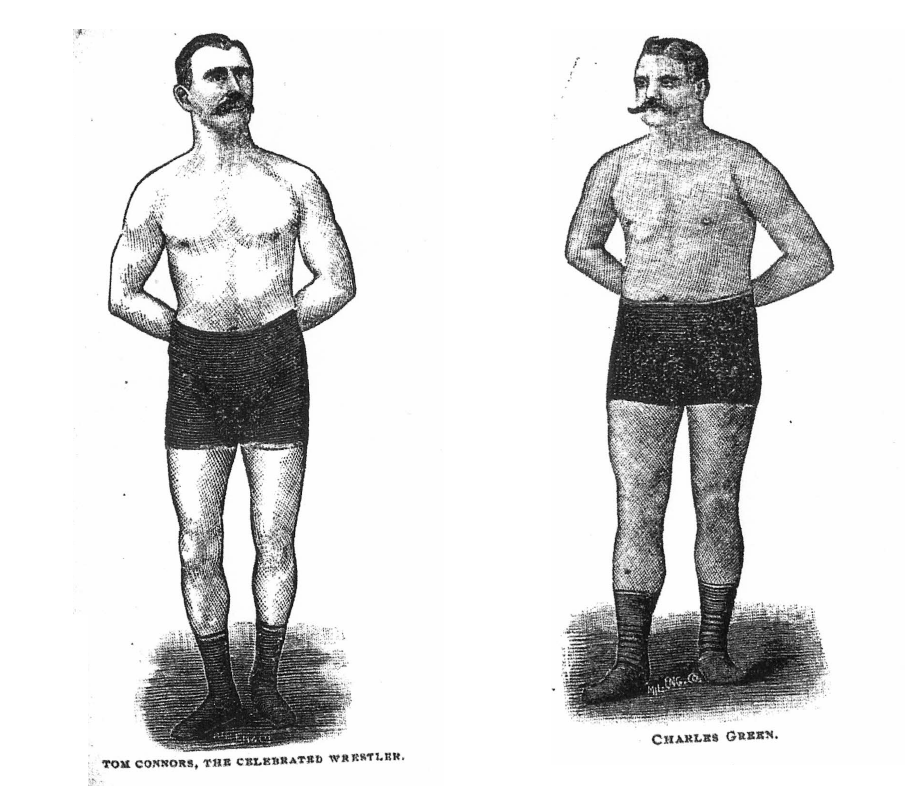
Amateurism
The true revival of the catch wrestling in East Lancashire happened in the 1920s during the glorious era of British amateur wrestling. Lancashire County Amateur Wrestling Association (LCAWA) was established in October 1923 and remained a member of NAWA till April 1927 when a decision was made to expel them from affiliated membership for promoting their own championship titles.- The best among the LCAWA champions, holders of the challenge gold and silver belts also became British Amateur Wrestling Champions. The greatest of them was a 9st champion Joe Reid of Leigh, Lancs, a collier by trade, he held 6 British titles for 5 consecutive years between 1930 and 1935 inclusively, and represented Team Great Britain at 1932 Olympic Games in Los Angeles, USA. Reid was "Teddy Lowe of 20th century" and was considered among the best and most scientific pound for pound catch wrestlers of the modern era from East Lancashire. Despite LCAWA's membership in NAWA was discontinued they didn't stop promoting and holding their own amateur tourneys (titles) in East Lancashire till mid-1930s. George Gregory of Bolton, Lancs who during his amateur years was LCAWA champion (welterweight and heavyweight divisions) later became a world-class pro wrestler, the British All-in wrestling heavyweight champion.
In order to popularize professional combative sports among local men in 1930 the Wrestling and Boxing Comrades' Association (W&BCA) was established in Wigan, Lancs. The chairman of W&BCA was a former pro wrestler and famous rugby coach T. McCarthy. Among the associates of that organization were legendary Joe Carroll and famous Billy Riley, who was a father of the modern Wigan catch wrestling (aka the Snake Pit- Catch).
After WW2, the British Amateur Wrestling Association changed the name catch-as-catch-can- to freestyle- wrestling. It was the beginning of the modern era of amateur catch wrestling in Great Britain. The greatest representative of that generation was ten-time British Champion Herbert Hall of Oldham, Lancs.
Origin
The origin of Lancashire catch wrestling goes all the way back to the 1300s. Outside the area of East Lancashire a wrestling style, which allowed catch-holds of any part of the person's body as well as the ground wrestling was unknown in Medieval England. Those two major features of Lancashire catch wrestling were of continental origin. The German folk wrestling style called Bauern-Art Ringen- (wrestling after the farmers fashion) or Rangeln had no limitations regarding the holds and featured ground wrestling. Variations of this style of wrestling were popular among Germanic people on the continent during the Middle Ages. Ironically, the English verbs to wring- and to wrangle- and German words for wrestling Ringen- and Rangeln- share origin.
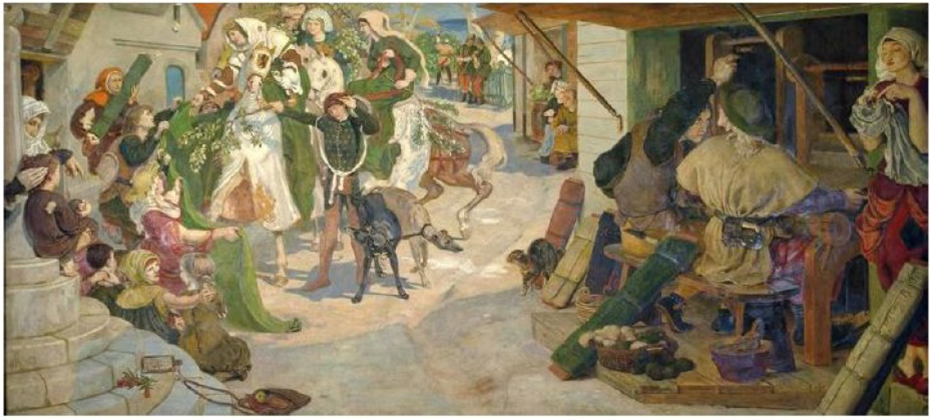
A variation of Ringen freestyle wrestling was brought to East Lancashire by the immigrants from Flanders, the textile workers AKA the Flemish weavers-, who were adept in that particular style of wrestling. In Netherlands and Flanders this freestyle wrestling was known as the Stoeijen (to touse, to tangle, to scuffle, to handle roughly). It was rough and tumble wrestling. The etymology of the word Stoeijen explains the original rules of that wrestling game. The Dutch Soeijen, Flemish Stuwen/Stouwen, German Stauen, and Old English Stowian (the modern English verb to stow- is derived from this word) basically meant to hold back, to restrain, to block or to suspend (your opponent) from any movement.
The first Flemish people to immigrate to East Lancashire go all the way back to the 14th century. The earliest Flemish weavers arrived to Bolton, Lancs in 1337. That is why the rough Lancashire up and down style of wrestling was often called the Bolton Method.- Flemish immigration reached its peak during the persecution of the Protestants in the Spanish Netherlands during the 16thI-17th centuries. During the era of religious wars in Europe, besides Flemish, the German and French Protestant textile workers also fled to the areas of East Lancashire and West Yorkshire. Arrival of those continental weavers largely influenced the growth and rise of the textile industry in that region of England. The variations of Ringen which were practiced by Flemish people as well as other immigrants from the continent merged with the English folk catch-hold wrestling style and over time evolved into a new unique wrestling style now known as the Lancashire Catch-as-Catch-Can style.
Since the times of the English Civil War (17th century) in East Lancashire and West Yorkshire the most common way of resolving disputes between two men was to have a fight after the Lancashire fashion. This fighting style was known as Lancashire up and down fighting, or purring. It usually was described as a combination of wrestling, throttling, and kicking.- The best purrers of Lancashire came from the Rochdale areas. The up and down fighting match featured a wide variety of brutal, non-wrestling tactics and was an all-in wrestling- affair. Lancashire fighting was a degenerated form of up and down catch wrestling. In that sport fighters appeared in the ring stripped to the waist, wearing a loin-clothes and a pair of spiked clogs. The wrestling skill was a decisive factor for winning the up and down fighting contest. According to the rules of Lancashire up and down fighting the victory was awarded only for submissions- (usually a strangle hold, a hang or a full-Nelson) or unable to continue- condition. The defeat had to be admitted verbally, or by raising the hand. Despite being called a fighting style- the rules of Lancashire fighting often didn't allow punching with the fist during the matches, and it was proficiency in wrestling skills (both standing and on the ground) which was a decisive factor in winning those contests. Professionalism (prize ring) was introduced in Lancashire fighting at the very early stages of its existence. Before a pro Lancashire catch wrestling ring was established, up and down fighting was the only professional combative sport of local men. Due to the great number of deaths which occurred during up and down fights this combative sport became illegal in the 1820s. Because of that up and down fighting prize ring was soon replaced with the pro Lancashire catch wrestling. After the introduction of professionalism into Lancashire catch wrestling, up and down fighting slowly ceased to exist and by the end of the 19th century it became extinct. Most of the professional Lancashire catch wrestlers of the 1830s and 1840s generation had up and down fighting background. All first pro catch wrestling stars were former purrers.
Notably, the transformation of up and down catch wrestling style into an all-in wrestling- (fighting) style was happening on the continent as well. German rough-and-tumble style of wrestling and fighting combined called Raufen had a lot of similarities with Lancashire up and down fighting. Similar evolution also occurred in Netherlands, Flanders and France.Probably the most famous reference to Lancashire wrestling comes from the 1892 book called Wrestling - Styles and Systems- by Walter Armstrong who was a renowned advocate of Cumbrian Back-Hold and London's Catch-Hold styles of wrestling. In that reference he cited the unknown- Lancashire writer:
A Lancashire wrestling match is an ugly sight: the fierce animal passions of the men which mark the struggles of maddened bulls, or wild beasts, the savage yelling of their partisans, the wrangling, and finally the clog business which settles all disputes and knotty points, are simply appalling.-
The sentence which follows this pretty vivid description of what Armstrong (and its unknown author of course) called Lancashire wrestling- says: In all matches the wrestlers compete in stockings or barefooted-, and etc. followed by the rules of the contemporary Lancashire catch wrestling which was free from all brutalities and non-wrestling tactics. Basically, the sentence which goes right after the famous quote contradicts the quote itself (clog business- v fair play in stockings or barefoot- and etc). This makes it obvious that the well known passage talks about the long forgotten- pro up and down fighting rather than about the modern pro Lancashire catch wrestling. This makes it clear that the whole purpose of even having that paragraph in the text was just to demonstrate (or reveal) to the reader, that despite the introduction of the modern day safety rules- the origin and background of the professional Lancashire catch wrestling is well known as being that of the professional up and down fighting i.e. purring-, and that this fact is not forgotten and is still well remembered.
Summarizing the above, the original Lancashire up and down wrestling which was brought to East Lancashire and West Yorkshire by the textile workers from the Continental Europe over the centuries transformed into the up and down fighting, a professional combative sport which in the early 1800s became illegal and in the first half of 19th century with introduction of the fair play rules evolved into the pro Lancashire catch-as-catch-can up and down wrestling. ?
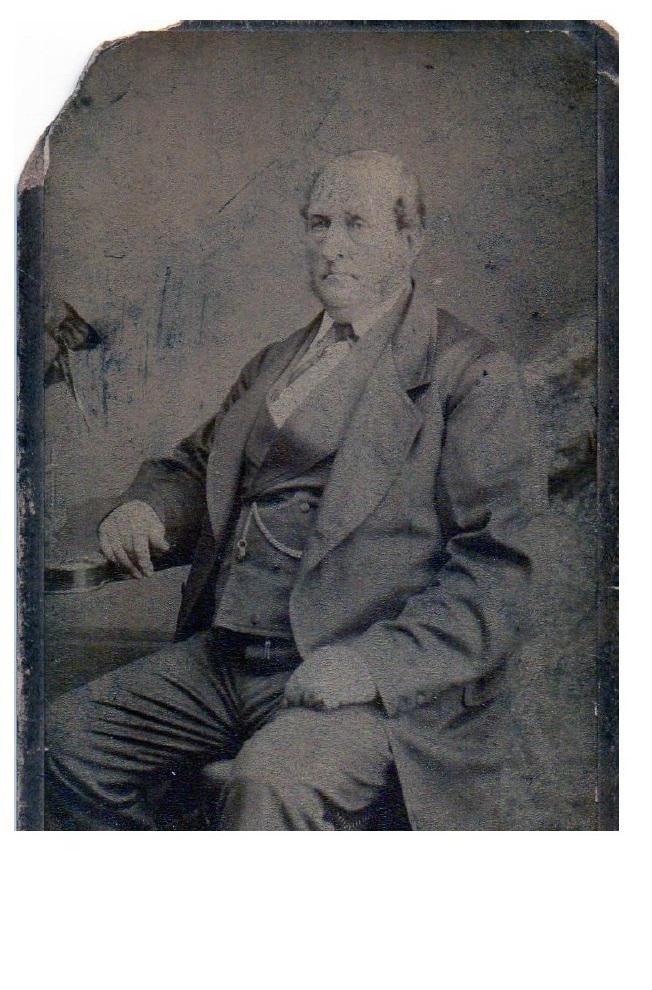
Description
Historically, there were two modes of Lancashire catch wrestling: the standing freestyle (wrossle for a thrut-, wrestling for a throw) and the up and down freestyle. In the former style the goal was to give a back fall (sometimes just like in other English folk wrestling styles it was substituted with three falls on any part of the body except hands, knees and feet) from the standing position (flying fall) with or without attacker falling down himself, and in the latter the wrestling match continued on the ground until one of the two wrestlers quits the contest either being restrained from any movement or being unable to continue for some reason.
The original up and down Lancashire catch wrestling was basically Dutch/Flemish Stoeijen. In that style to give a fall/throw/take down wasn't enough and the victor had to master his opponent on the ground by capturing- him (keeping him immovable in the submissive position) for the previously agreed amount of time or making him admit his defeat verbally or by raising his hand.
The Lancashire version of the Dutch/Flemish Stoijen wrestling was still around even in the first half of the 20th century. A famous journalist, TV producer and writer Don Haworth (1924-2007), in his book called Bright Morning: Images of Lancashire Boyhood-, gives an account of the local wrestling game which was popular in Burnley, Lancs and which he remembered from the days of his youth in the 1930s, and which we assume was passed down the generations from the elders to the youths. He describes that game as follows: Sometimes there was a general melee, but more often champions fought each other in ritual wrestling matches. The aim was to down an opponent and sit on him until he gave in.- According to Haworth some unfair methods were practiced during those contests. The most common of such non-wrestling strategies was pressing with hands against your opponent's throat (AKA throttling) in order to place him on his back underneath yourself, and then by trying to keep him immovable in that submissive position to make him surrender. This tactic- was definitely inherited from the long forgotten- times of the glorious days- of the Lancashire up and down fighting when one wrestler went down under his adversary's weight and then was put in the damper- as they called it in East Lancashire. Such act of throttling- was strictly prohibited in Lancashire catch wrestling matches since 1850s when the very first written rules were introduced.
The two original modes of Lancashire catch wrestling perfectly correspond to the Half Wrestling- or wrestling for a throw- (Halber Ringkampf) and Full Wrestling- or wrestling for overcoming on the ground- (Ganzer Ringkampf) conditions of German folk freestyle wrestling, Ringen. Similar modes of wrestling (wrestling for a throw and wrestling for overcoming on the ground) were also present in Dutch/Flemish and French (Provencal) wrestling styles.
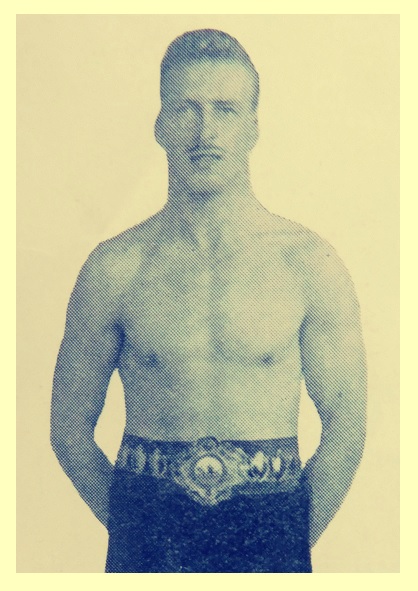
In the modern- Lancashire catch wrestling (this style became the only official style of Lancashire wrestling since the introduction of the 1856 Snipe Inn Rules) the wrestlers, after shaking hands in a sign of fair-play, started their match on the green sward- at a distance from each other carefully looking for an opening and then suddenly attack, rushing into their adversary. Often they would snatch one another by the hands, intertwining their fingers and using all their strength to try and force their opponent down to his knees. Another common start was to catch their adversary by the back of his neck (head-holds). By proceeding this way they would close and break until the proper close quarter clinch hold (hug) was achieved. This wrestling style was a hand-to-hand combat. Wrestlers were allowed to take any hold of their opponent's body above and under the waist and switch holds as often as they pleased in order to achieve the advantageous hold which led to a throw. The use of legs and feet for throwing (hooking and tripping respectively) was allowed, but it wasn't favored. Instead the lift and throw- technique dominated that style. The most popular throw/thrut inherited from the standing catch wrestling was called the Buckfang which is running in with the head between the legs- and flipping the opponent heels over head- thus giving him a heavy violent fall. In modern pro wrestling this throw is known as backdrop or back body drop. This freestyle wrestling featured such techniques (holds and throws) such as various headlocks, fireman's lift and cross-buttocks (both versions, arm around the neck and arm around the body) as well as different kinds of Nelsons (both ways, from the standing position and on the ground). Throws which were given from the leg attacks were mostly the double leg and the high crotch (single leg attack) lifts. In par-terre a various techniques were applied from both the front and behind of the opponent. The objective of the wrestling match after the Lancashire fashion was to give opponent a fair back fall, the back fall when both shoulders touched the ground simultaneously. If the victory wasn't gained from the standing position the struggle continued on the ground until one of the two achieved a fair back fall. All kinds of quick (instant) fair back falls counted, namely flying falls, pinning falls and rolling falls.
The Lancashire wrestlers' attire was limited to shorts (originally drawers) and socks (originally spiked pumps, hob-nailed light shoes which were worn in order to prevent slippery). According to the above mentioned Snipe Inn Lancashire Catch-as-catch-can Rules, just like in the old Lancashire up and down fighting neither party could use resin or be rubbed with pernicious (ingridious) drugs or grease of any description.
All foul acts or willful brutality, any unmanly techniques and tactics of the past (atrocities which were common during the up and down fighting contests), namely hanging (putting on the hang) or throttling, kicking, as well as head-butting, biting, gouging and scratching and etc. were strictly prohibited. Putting someone in a hold was allowed not for delivering the punishment to make the opponent quit the contest (as it was in up and down fighting) but for the sole purpose of achieving a fair back fall (flying fall, pinfall, rolling fall). The Referee had to stop the match if he saw a wrestler applying any dangerous holds on another wrestler for the purpose of willfully hurting, maiming him or to make him quit.
Current Status
At this time the Lancashire catch-as-catch-can wrestling in its original traditional wrestling format is not practiced anymore. The last attempt to revive folk wrestling in East Lancashire and West Yorkshire was done in the late 1970s. In 1978-2019 there was a championship knock-out tournament the "Longwood Thump" which along with other old pastimes was part of an annual morrismen festival in Saddleworth, Yorks called the Rushcart. It was a freestyle wrestling competition, fair back fall to decide the winner (both shoulders on the ground for count of three) open to the morris dancers from different parts of England who represented their ensembles at this great folk gathering. Originally that freestyle wrestling championship was decided in what was called the Saddleworth Style- which was described as the first one to hit the floor loses, best of 3 falls-, and that basically makes it one of the two variations of an old Lancashire wrestling the standing catch. The tournament winner held a perpetual trophy the leather belt mounted with silver. The last champion was Jacob Frohawk-McLucas of "Rose and Castle Morris" (Stoke Bruerne, Northamptonshire). This competition was discontinued due to the numerous injuries sustained by participants of the wrestling matches.
Currently the wide variety of professional catch wrestling styles which evolved from Lancashire catch-as-catch-can wrestling or were inspired and influenced by it can be found all around the world. The knowledge of catch wrestling became an essential skill for every mixed martial artist of the modern era.
This article is based on The Story of Catch: The Story of Lancashire Catch-as-catch-can Wrestling. FIRST FIFTY YEARS 1820-1870![]() , by Ruslan C Pashayev. Get your copy today!
, by Ruslan C Pashayev. Get your copy today!
You can listen to my interview with Ruslan on my podcast here: The DO IT AGAIN Podcast: The Story of Catch w/ Ruslan Pashayev